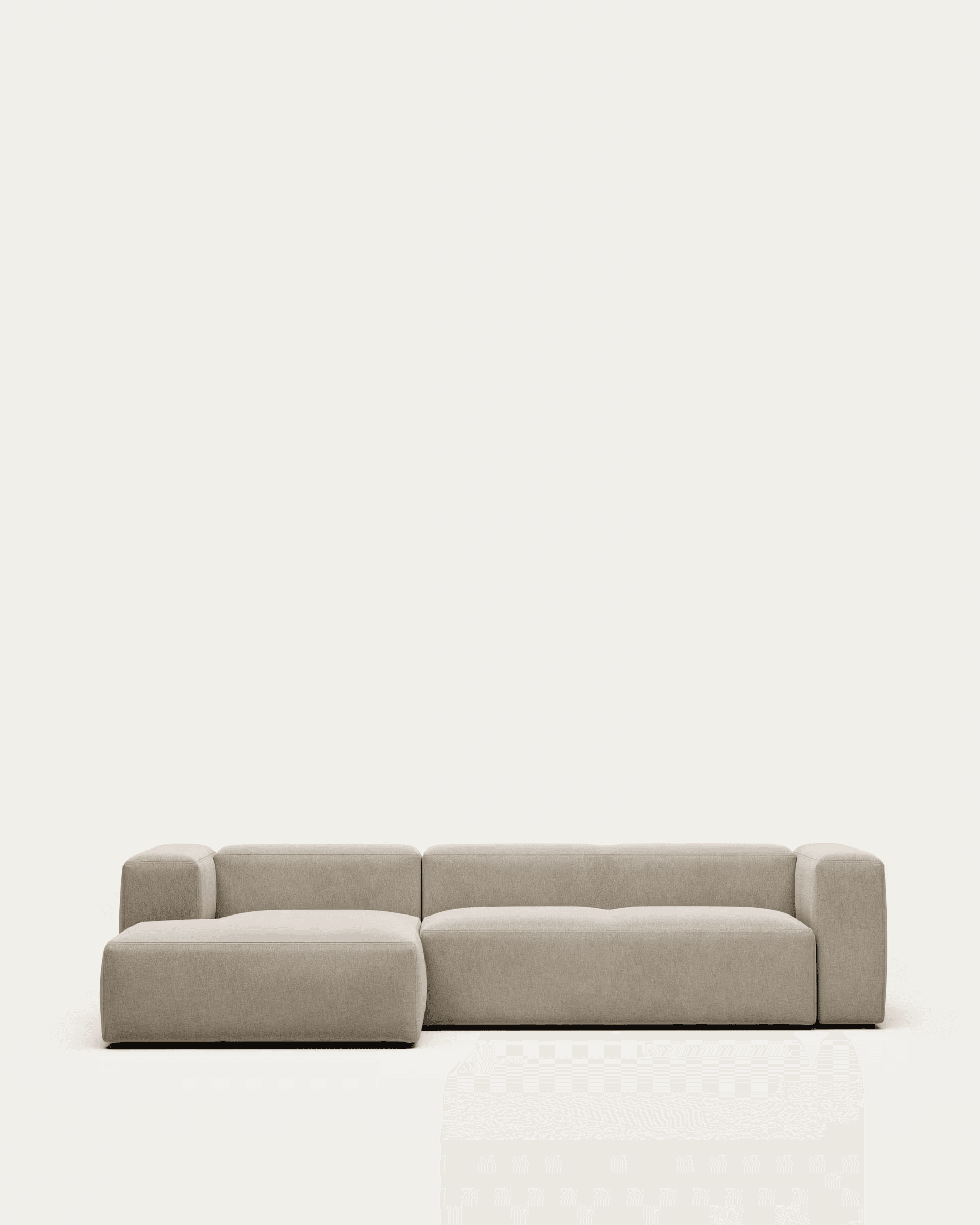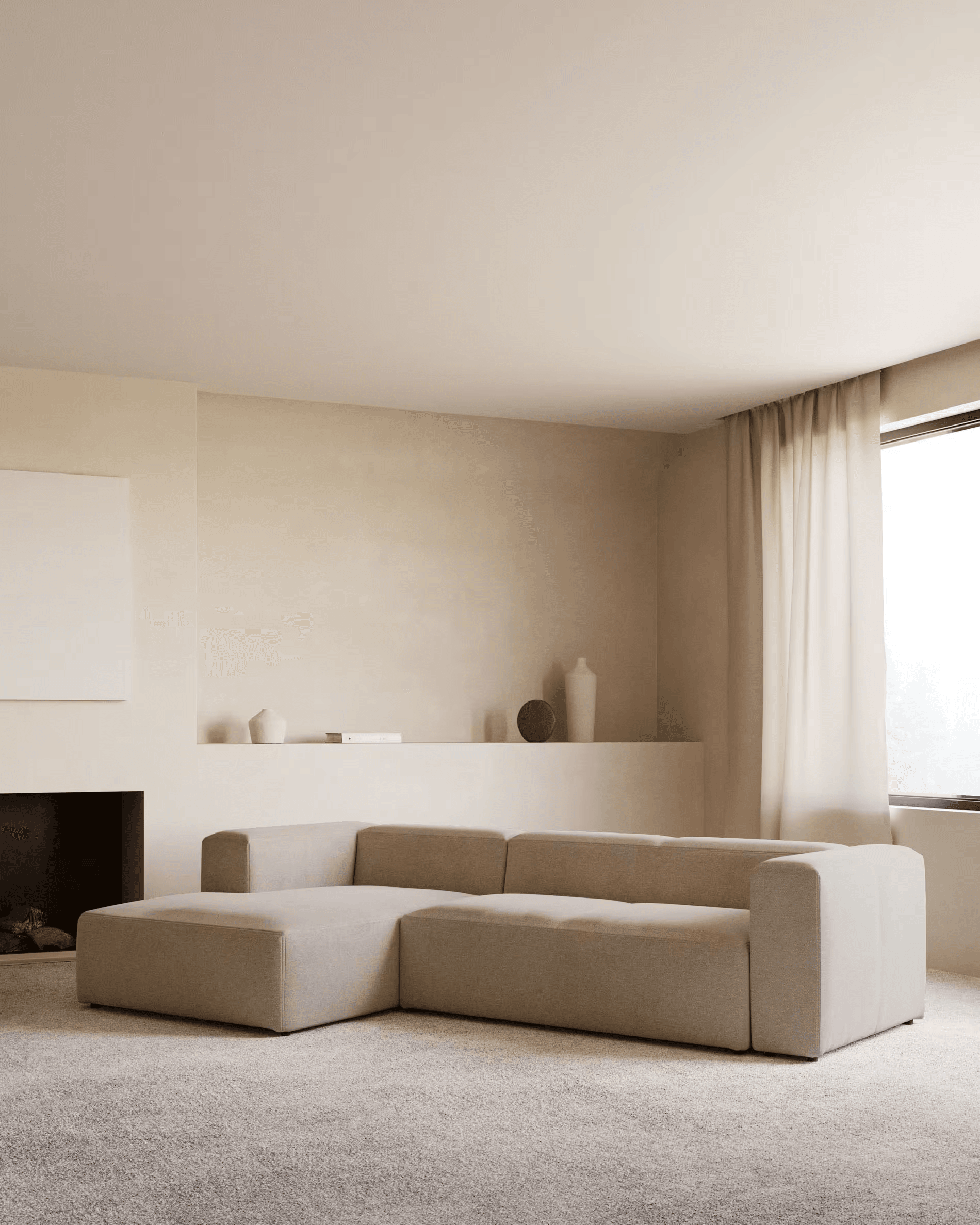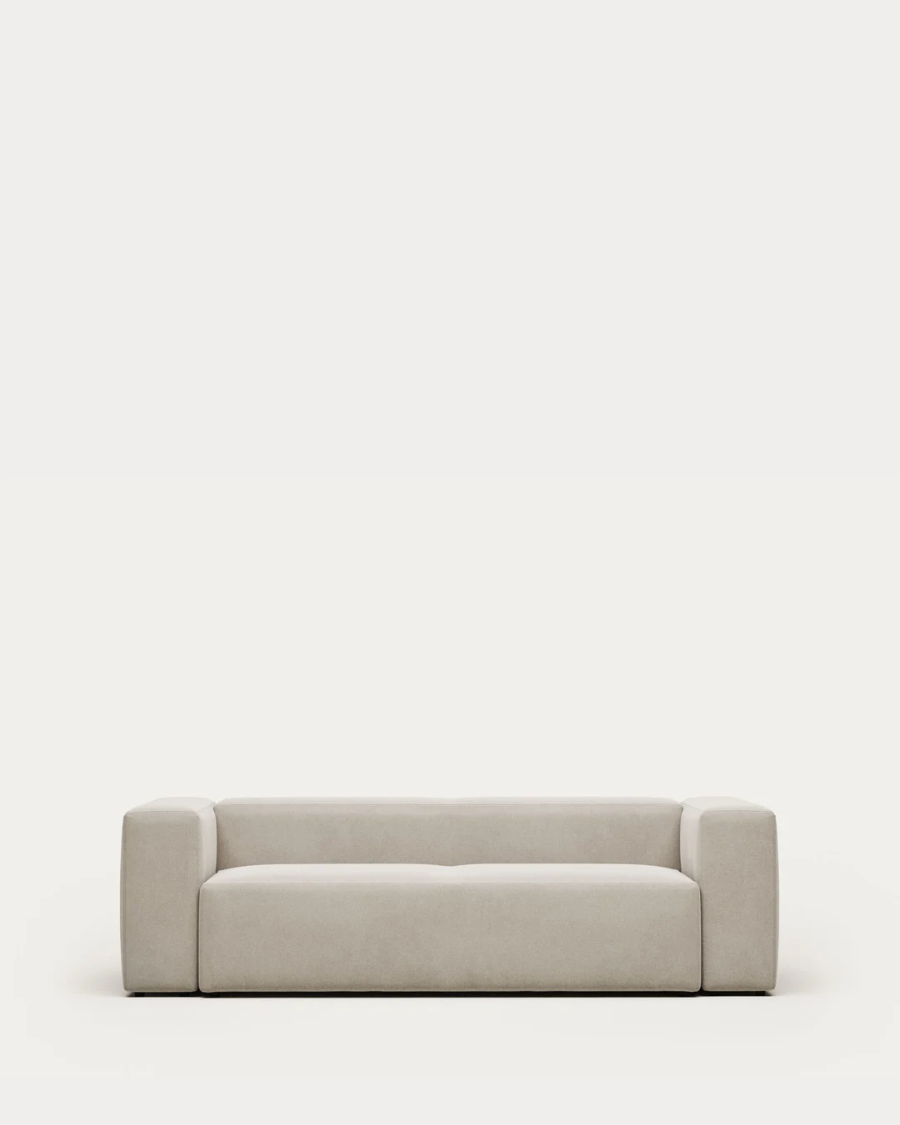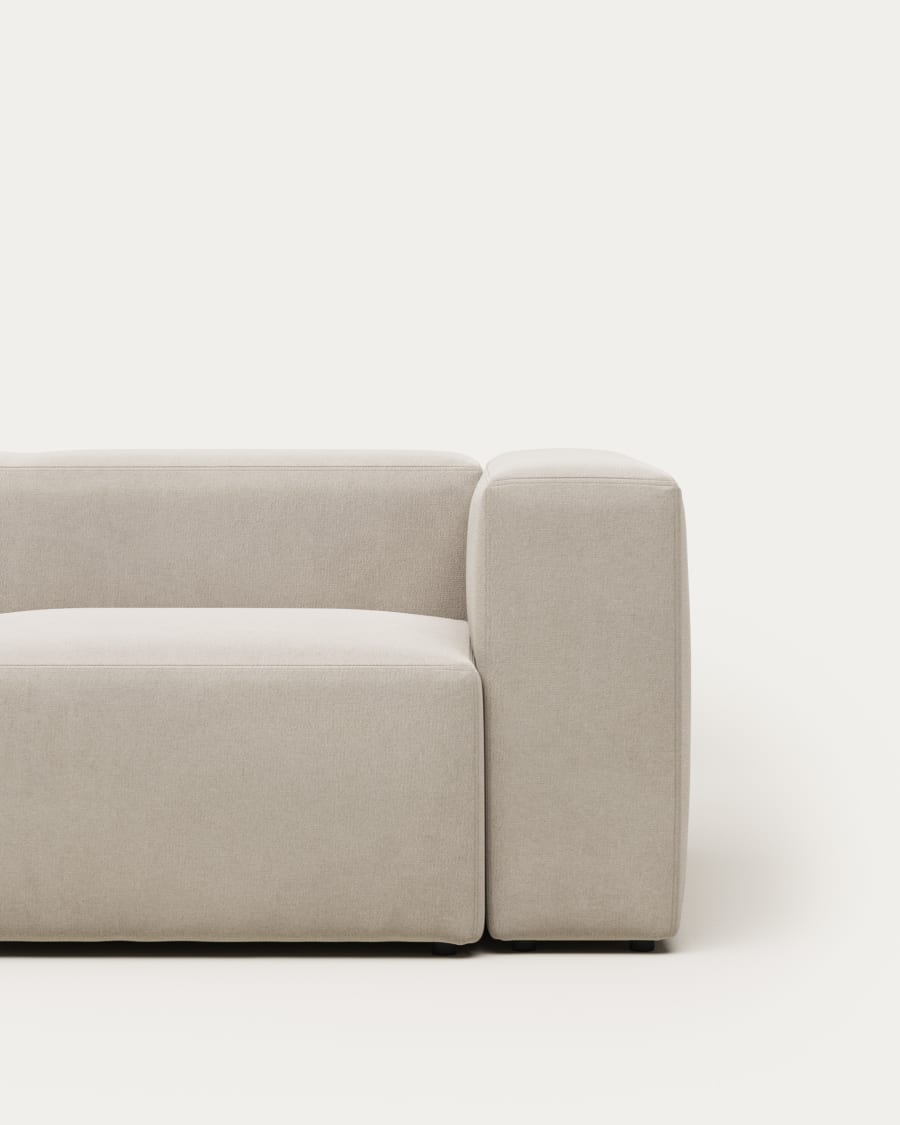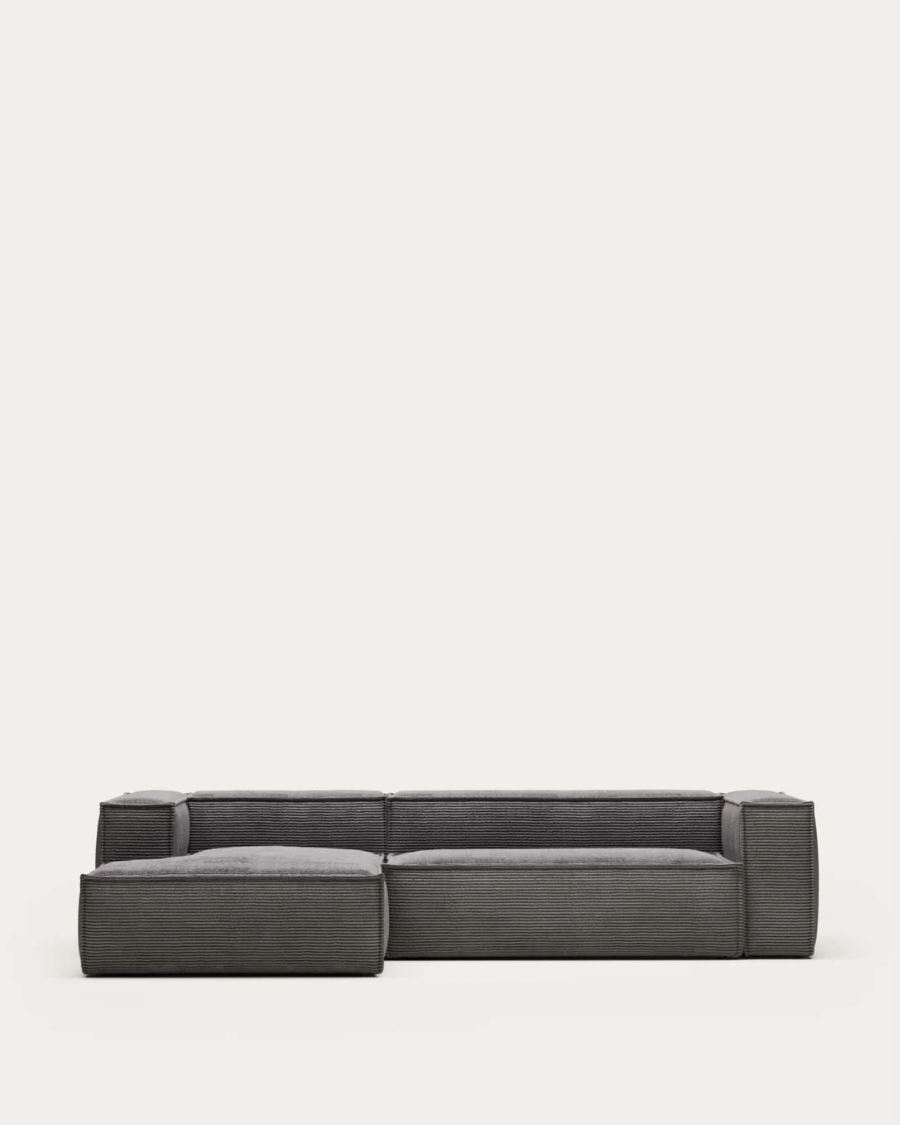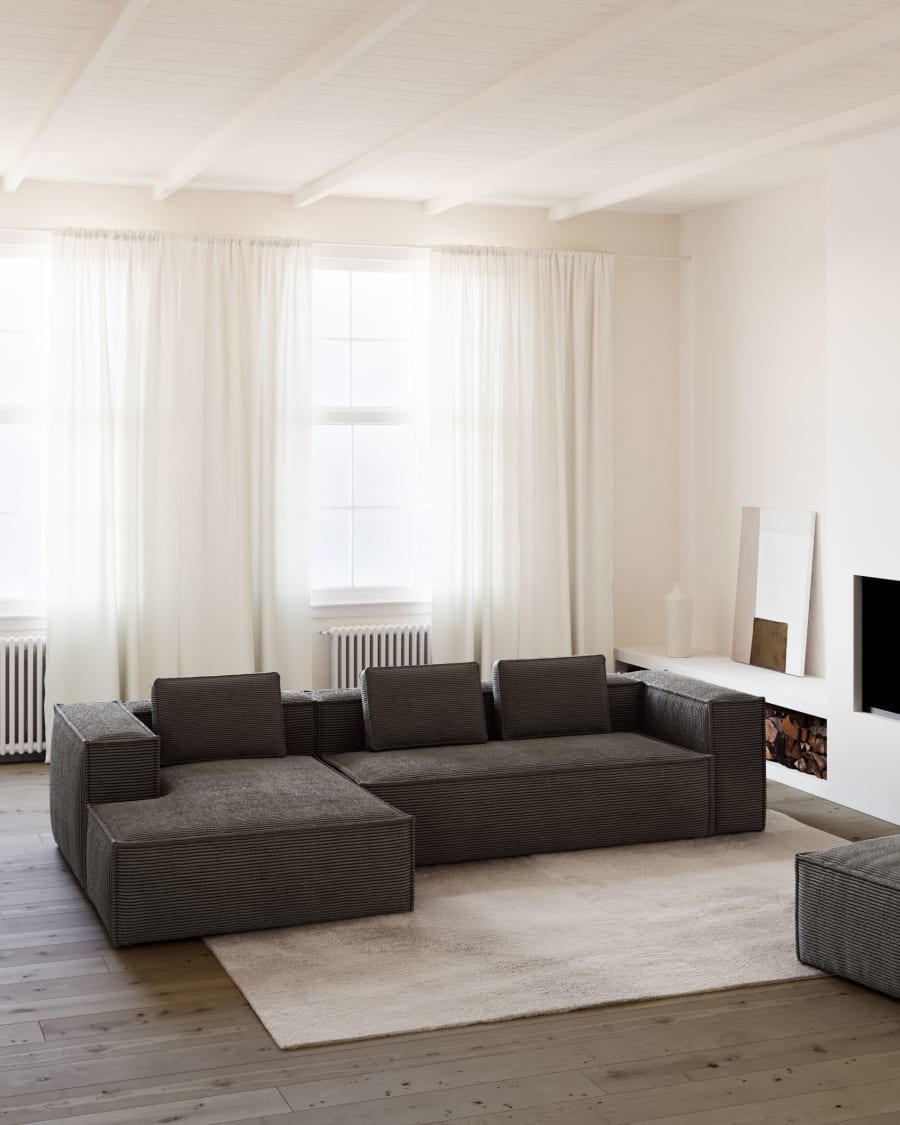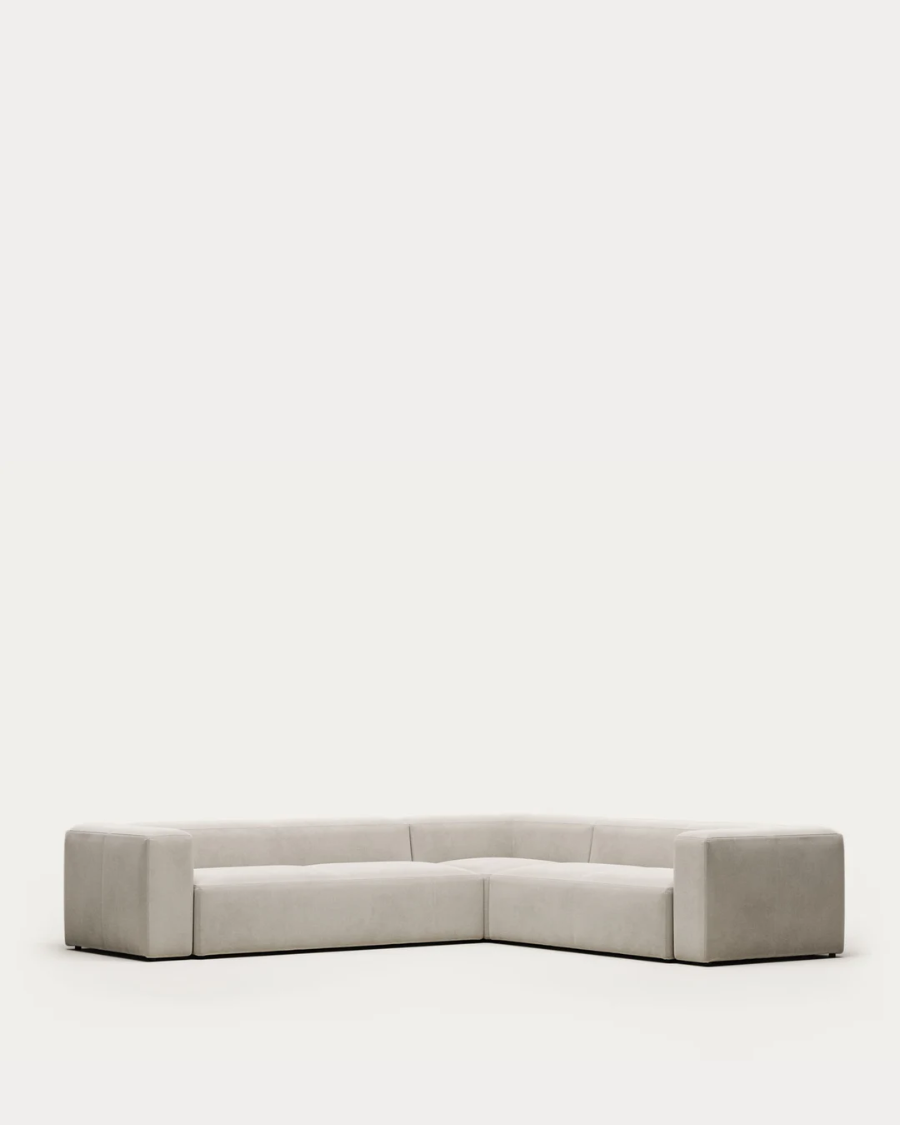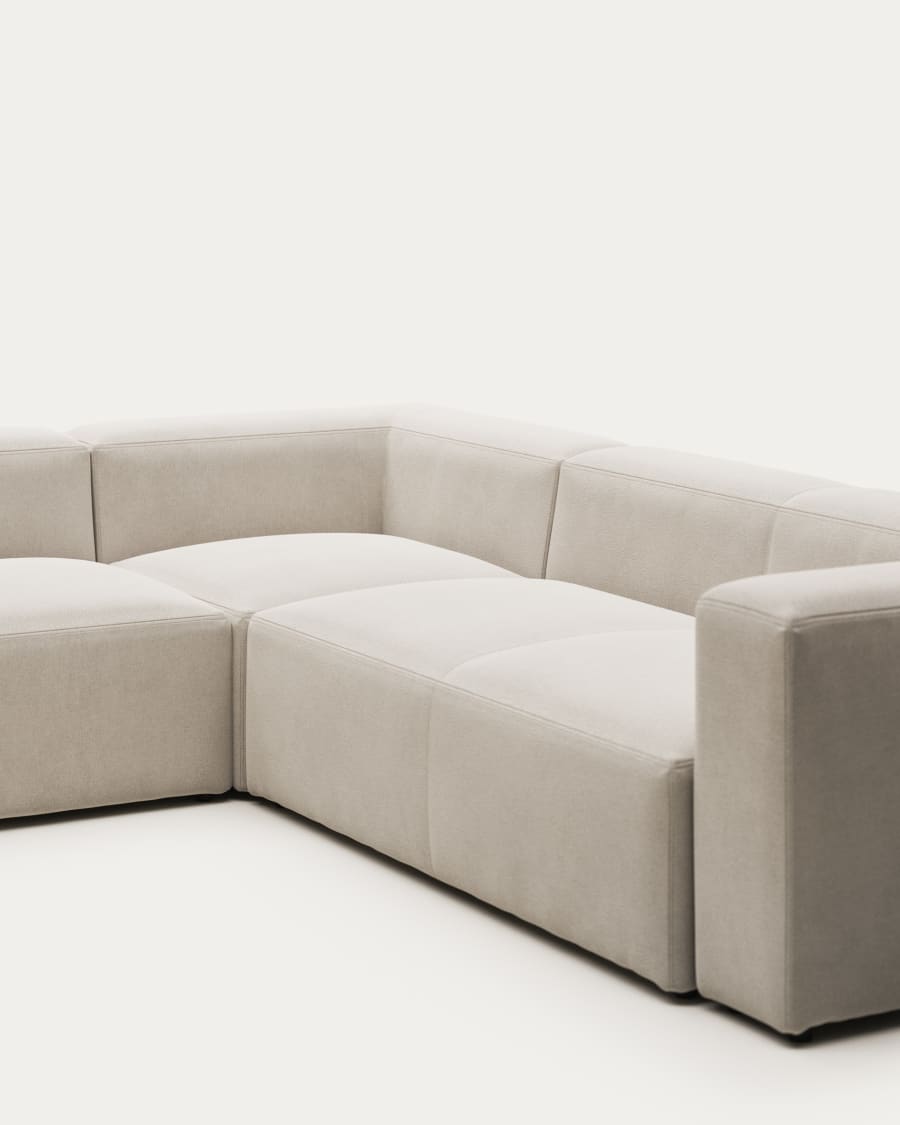- Home
- Japandi Sofas
Japandi Sofas
Japandi Sofas: Japanese-Scandinavian Fusion Collection
Discover Japandi sofas, the perfect fusion of Japanese serenity and Scandinavian comfort for a minimalist, peaceful, and highly functional living space.
Wabi-Sabi Philosophy In Japandi Sofas
Wabi-Sabi’s influence on Japandi sofas lies in celebrating imperfection. Natural textures like linen and wool are intentionally irregular, embracing asymmetry. Wood frames may showcase visible grain patterns, while muted tones echo aged materials. This contrasts with strict minimalism, prioritizing warmth over sterility. A sofa’s slightly uneven stitching or organic curves becomes a feature, not a flaw. By accepting natural variations, these pieces invite mindfulness into daily life.
Scandinavian Hygge Essence
Hygge’s comfort-focused ethos shapes Japandi sofa design. Deep cushions use feather or foam blends for sink-in softness. Rounded armrests and low profiles create approachable silhouettes. Cozy textiles like boucle or sherpa mimic Nordic knits. Even minimalist frames incorporate curved details reminiscent of cloud-like softness. This balance ensures spaces feel nurturing without sacrificing sophistication. Thermal imagery suggests these sofas are designed for lingering moments.
Natural Materials Combination
Material selection defines Japandi identity. Solid oak or teak bases age gracefully, their patina deepening over time. Linen covers soften with use, gaining character. Wool-blend upholstery resists pilling while maintaining tactile appeal. Some models integrate rattan accents for organic contrast. These choices create sensory richness without visual clutter. The emphasis on renewable resources aligns with contemporary sustainability values, making ethical design choices inherently stylish.
Earthy Color Palettes
Color schemes reflect nature’s subtlety. Beige cappuccino tones evoke sunlit sand, while soft grays mimic weathered stone. Accents of moss green or terracotta add depth without drama. Dark teak legs provide grounding against pale upholstery. This restrained palette creates visual calm, allowing architectural details to shine. Seasonal adaptability comes through removable cushions in tonal variations, enabling easy refreshes without redecorating.
Geometric Shape Functionality
Sharp angles meet practical innovation in Japandi geometry. Modular L-shaped configurations adapt to evolving needs. Hidden storage compartments within chaise bases maximize urban living spaces. Convertible designs transform from sofa to bed seamlessly. Symmetrical layouts maintain visual order while accommodating family life. Each line serves purpose – sloped armrests double as bookrests, squared-off profiles optimize legroom. This functionality remains discreetly integrated within elegant forms.
Textured Integration Design
Layered textures elevate tactile experience. Velveteen seats contrast with nubby boucle backrests. Chunky wool throws drape over smooth wooden frames. Woven rattan panels add depth to streamlined profiles. These combinations prevent sterile minimalism, satisfying touch senses without visual overload. Strategic placement – like textured accent cushions – creates focal points. The result is a balanced sensory environment.
Practical Storage Solutions
Storage innovations remain hidden within clean lines. Chaise longues conceal lift-up compartments for remotes or blankets. Ottoman stools double as seating and coffee tables with lift-top designs. Wall-hugging profiles maximize floor space. Convertible mechanisms operate seamlessly within svelte frames. These features demonstrate how minimalism can coexist with real-life practicality. The absence of visible hardware maintains aesthetic purity while solving everyday storage challenges.
Design Philosophy Synergy
The union of Wabi-Sabi and Hygge philosophies creates unique appeal. Imperfect textures meet precise tailoring, like uneven linen against precisely mitered corners. Natural material beauty combines with engineered comfort through pocket coil cushions. This duality satisfies both visual and tactile senses. The result isn’t just furniture – it’s a lifestyle choice that embraces calm, durability, and intentional living without sacrificing modern requirements.
What defines a japandi sofa?
A Japandi sofa merges the Japanese wabi-sabi philosophy—celebrating imperfection and simplicity—with Scandinavian hygge, prioritizing cozy minimalism. This fusion creates furniture that balances tranquility, functionality, and organic elegance rooted in nature. Wabi-sabi’s subtle imperfections in wood grain meet hygge’s warm, inviting textures for daily use.
Key traits include clean geometric lines and understated silhouettes. These sofas avoid austerity by integrating natural textures like linen upholstery, wool cushions, and rattan accents. Light woods (ash, oak) contrast with darker teak frames or matte black metal legs, echoing Japanese aesthetics. Asymmetry in seams or stitching nods to wabi-sabi’s organic imperfection, while Scandi craftsmanship ensures precise joinery and proportions.
Color palettes lean neutral: beige, ecru, and soft greys dominate, occasionally paired with deep navy or charcoal details. Monochrome tones highlight materials—wool cushions with tactile boucle weaves or velvet finishes that invite touch. Hidden storage compartments under seats maintain clutter-free serenity, reflecting Scandi practicality and Japanese serenity.
Despite minimalist appearances, Japandi sofas prioritize functional comfort. Low-profile frames with plush cushions encourage relaxation, while modular L-shaped or reversible units adapt to gatherings or solo nooks. Features like removable slipcovers or adjustable backrests merge practicality with intentional living. For example, a 4-seater might combine velvet cappuccino fabric with teak, balancing durability with visual coherence.
By combining Scandi hygge’s warmth with wabi-sabi’s organic asymmetry, these sofas transform living rooms into sanctuaries. A dark Japandi sofa in charcoal velvet, paired with reclaimed oak, becomes a modern yet earthy focal point—proving simplicity, layered with texture and purpose, becomes anything but boring. In darker tones, the style maintains balance through natural materials, avoiding maximalism by emphasizing intentional craftsmanship.
How to choose your japandi sofa
Focus on materials and textures
Japandi sofas achieve their signature blend through intentional material choices. Linen upholstery, like on the Cielo 3.5-seater, develops soft wrinkles over time, embodying wabi-sabi’s appreciation for natural imperfection while staying breathable for year-round use. For colder climates, wool upholstery adds tactile warmth, as seen in the Falkor eco-friendly sofa’s gray tones. Boucle fabric (e.g., the Naho sofa’s “white boucle”) introduces subtle texture without visual overload, while corduroy velvet (e.g., the Harper sectional’s “beige corduroy”) marries durability with muted luxury.
Frames made from solid wood—such as oak or eucalyptus—anchor the sofa in nature’s simplicity. Light Scandinavian-inspired woods like bleached oak dominate, but darker rattan accents (e.g., the Will sofa’s cane-backed cushions) add Japanese-inspired warmth. Over 80% of customer reviews highlight solid wood’s role in creating heirloom-quality pieces that balance strength with minimalist aesthetics.
Select the right color palette
Japandi color schemes channel calm and serenity by merging Nordic winters’ muted tones with Japan’s Zen-inspired palettes. Begin with beige (e.g., the Miley 2-seater’s “velvet beige”), cream, or gray (Cane-line’s “Taupe” fabric) for a grounding base. Introduce earthy accents like sage green cushions or charcoal throws to echo organic textures while avoiding clutter. The Syra 6-seater’s “light gray” fabric demonstrates how neutral tones can anchor a room without sacrificing sophistication.
Layering similar tones is key: pair the Anais 6-seater’s “beige effect peau de mouton” upholstery with linen ivory curtains or a wool gray throw. This creates depth without harsh contrasts, honoring the “less is more” philosophy. Neutral bases like Cane-line’s “White Scent” fabric ensure compatibility with light wood tables or rattan side chairs, fostering a cohesive, clutter-free environment.
Consider the shape and silhouette
The silhouette merges Scandinavian geometry with Japanese organic forms to create visual harmony. Low-profile designs, like the Myra 160 cm convertible’s 18-inch height, mimic Japanese tatami rooms’ floor-level aesthetics, making small spaces feel expansive. Pair this with clean geometric lines for modernity, softened by organic curves in armrests or backrests to echo natural shapes like river stones or flowing water.
- Low-profile designs to create an open, airy feel
- Clean, straight lines for a minimalist look
- Soft, organic curves to add a touch of nature and comfort
- Uncluttered silhouettes without excessive ornamentation
Models like the Miley 2-seater’s “velours clair” or the Harper sectional’s “corduroy beige” exemplify functional simplicity. Their modular designs often include hidden storage compartments or reversible cushions, merging Scandinavian practicality with Japanese refinement. This ensures the sofa becomes a serene anchor, never overwhelming the space—a hallmark of Japandi’s harmonious balance.
Beyond aesthetics: assessing quality and durability
The importance of a solid frame
At the core of every Japandi sofa lies a structural foundation that determines its longevity. Kiln-dried hardwoods like oak or ash provide unparalleled stability, resisting warping from humidity changes. This aligns with Japandi’s wabi-sabi philosophy, where materials age gracefully. The controlled drying process removes moisture evenly, preventing internal stress that causes splitting over time. Oak’s natural grain patterns add subtle visual depth, echoing Japan’s appreciation for organic imperfections. Softwoods like pine or particleboard degrade faster—risking premature replacement, contradicting the minimalist ethos of sustainable living.
Cushion construction and comfort
Japandi sofas balance comfort and practicality through technical precision. High-resilience (HR) foam with densities above 30kg/m³ ensures cushions retain shape for years. Denser foams, like 40kg/m³, resist compression in high-use areas while maintaining softness. Sinuous springs beneath the seating area distribute weight evenly, preventing sagging—a nod to hygge’s emphasis on enduring coziness. These systems create a responsive feel that supports posture without sacrificing softness. Pair them with natural textures like linen or wool to reinforce the design’s organic harmony, blending tactile warmth with structural rigor.
| Material | Pros | Cons | Best For |
|---|---|---|---|
| Linen | Breathable, natural texture, elegant | Wrinkles easily, less stain-resistant | Warm climates, minimalist aesthetics |
| Wool Blend | Durable, stain-resistant, soft | Warm in summer, higher cost | High-traffic areas, family homes |
| Bouclé | Textural depth, trendy, hides wear | Snags with pets, niche appeal | Modern Japandi interiors with tactile contrast |
| Corduroy Velvet | Soft, warm, durable | Attracts lint, heavier visual weight | Retro luxury, deep comfort seekers |
Each fabric choice reflects Japandi’s duality: linen’s understated elegance channels Japanese simplicity, while wool’s practicality mirrors Scandinavian functionality. Bouclé’s tactile allure adds hygge-style comfort, and corduroy velvet introduces richness without overwhelming minimalism.
Eco-friendly and ethical considerations
Sustainability is intrinsic to Japandi’s fusion of wabi-sabi and hygge. FSC-certified wood ensures responsibly managed forests, promoting biodiversity and ethical labor practices. Pair this with CertiPUR-US certified foam, which eliminates harmful chemicals and reduces indoor VOCs to below 0.5 parts per million—a standard for healthier air. These certifications transform the sofa into a conscious choice, harmonizing Japandi’s serene aesthetics with environmental stewardship. For instance, FSC-certified oak frames paired with CertiPUR-US foam meet green standards like LEED, appealing to eco-conscious buyers seeking both style and virtue.
Finding The Perfect Function: Modular, Convertible, And Sectional Options
Modular Japandi Sofas For Ultimate Flexibility
Modular Japandi sofas redefine spatial adaptability. Their block-like structures allow effortless reconfiguration, adapting to evolving needs while maintaining minimalist integrity. Each component—clean-lined, low-profile—retains visual simplicity, avoiding clutter. Natural textures like linen upholstery or solid oak frames ensure harmony with wabi-sabi’s embrace of organic imperfection. A modular design’s geometric precision, paired with muted tones like warm grays or oatmeal, creates a canvas for hygge-inspired coziness without sacrificing Japandi’s serene aesthetic.
Convertible Japandi Sofas: Style Meets Practicality
Convertible Japandi sofas tackle dual-purpose elegance. Discreet mechanisms, like the “convertible express” system, hide within streamlined frames. The Rimini model, for instance, transforms from a beige textured L-shaped sofa to a guest-ready bed in seconds, its hidden storage compartment adding practicality. No bulky hardware disrupts its Zen-like silhouette. Scandinavian functionality meets Japanese restraint: clean lines persist whether upright or reclined, proving comfort and aesthetics need not compete. Even in compact spaces, these sofas embody hygge’s warmth through tactile fabrics like bouclé or wool blends.
Sectional Japandi Sofas For Spacious Living
Sectional Japandi sofas defy the myth that minimalist design can’t scale. A low-profile silhouette with sharp, unadorned lines anchors large rooms without overwhelming them. Neutral upholstery—think soft beiges or slate grays—pairs with slender black metal or light oak legs, balancing presence and subtlety. Reversible L-shaped configurations cater to open-plan layouts, while 360-degree finishes ensure cohesive views from any angle. Magnets between modules maintain alignment, preserving Japandi’s uncluttered ethos even in expansive setups.
- Modular sofas: Ideal for adaptable living spaces and future-proofing your layout.
- Convertible sofas: Perfect for small apartments or guest rooms, combining seating and sleeping functions without sacrificing style.
- Sectional sofas: Best for larger families or living rooms, providing ample seating while maintaining a cohesive, uncluttered look.
How to style your Japandi sofa
Layering with natural textiles
The Japandi sofa thrives on texture contrasts that feel organic yet cohesive. Start with a sofa in linen or cotton-linen blend, then drape a wool throw across one arm for warmth. Pair with bouclé cushions in soft beige or oatmeal, their tactile surface contrasting the sofa’s smoothness without visual noise. For depth, add a handwoven wool cushion in a muted terracotta—its subtle pop of color honors the earthy palette. Always anchor these layers in neutral tones to maintain serenity. Linen’s breathability ensures seasonal adaptability, while bouclé’s softness invites comfort.
Pairing with the right furniture
Japandi’s minimalist ethos demands furniture that complements the sofa’s clean lines. Choose a low-profile coffee table in light oak with rounded edges, echoing the organic softness of the sofa. Add a floating shelf in dark walnut to display a single ceramic vase—this contrast of light and dark wood nods to Japanese balance. Prioritize negative space: leave 30% of the room empty to let each piece breathe. Overloading disrupts the intentional simplicity these designs celebrate. Light woods like oak highlight Scandinavian brightness, while dark walnut accents mirror Japanese grounding elements, fostering a cultural dialogue through material choices.
Completing the look with accessories
Japandi accessories follow “less is more,” where each object tells a quiet story. Place a handcrafted ceramic vase with an irregular glaze on the coffee table—its asymmetry embodies wabi-sabi’s beauty in imperfection. Nearby, a rice paper pendant light casts soft shadows, while a single potted monstera introduces living texture. Avoid trends; opt for timeless pieces that age gracefully, like a wool rug with a faint tonal pattern. The rug’s shifting hues reflect the Japandi love for surfaces that evolve with time and light, central to wabi-sabi.
- Add textured cushions and throws in materials like wool, cotton, or bouclé.
- Place a simple, low-profile wooden coffee table in front of the sofa.
- Incorporate a few natural elements like a ceramic vase or a green plant nearby.
- Ensure ample negative space around the sofa to maintain a minimalist feel.
FAQ
What defines the Japandi sofa aesthetic?
Japandi sofas blend Japanese minimalism with Scandinavian hygge, creating spaces that feel serene and functional. They feature clean lines, organic curves, and natural materials like light wood, linen, or bouclé. Neutral color palettes—think beiges, greiges, and soft grays—dominate, often accented by darker wood tones or black details for contrast. The design philosophy prioritizes intentional simplicity, avoiding clutter while ensuring comfort through high-quality craftsmanship and tactile textures.
How do Japandi sofas differ from pure Scandinavian or Japanese designs?
Japandi sofas uniquely merge two philosophies: Scandinavian hygge’s cozy warmth and Japanese wabi-sabi’s celebration of imperfection. Unlike stark Nordic minimalism, Japandi adds subtle texture contrasts (e.g., smooth wood with nubby bouclé) and asymmetry. Compared to traditional Japanese designs, they incorporate more padded comfort and low-profile silhouettes, balancing the austere elegance of shoji screens with the inviting softness of Nordic knits.
What materials are best for a durable Japandi sofa?
Prioritize natural, eco-conscious materials. Opt for kiln-dried hardwood frames (FSC-certified for sustainability) and high-resilience foam cushions with CertiPUR-US certification for safety. Upholstery choices include linen (breathable but prone to wrinkles), wool blends (durable, stain-resistant), or bouclé (trendy but snag-prone). For authenticity, consider reclaimed wood accents or cane detailing. Avoid particleboard cores or non-recyclable synthetics to align with Japandi’s sustainability ethos.
Can Japandi sofas work in small spaces?
Absolutely—Japandi’s low-profile silhouettes and modular designs make them ideal for compact areas. Choose a streamlined 2-seater with sleek legs to maintain visual lightness. Convertible models (e.g., the "Crocus" or "Myra" series) offer dual functionality as daybeds. For tight corners, angled sectionals with reversible chaise lounges adapt flexibly. Always pair with uncluttered layouts to amplify the sense of space.
How to style a Japandi sofa for year-round appeal?
Layer textures, not patterns. Drape a wool throw over linen cushions for winter warmth, swapping it for a cotton cover in summer. Use ceramic vases with dried pampas grass for organic texture, and add a single sculptural ceramic piece for wabi-sabi charm. Keep side tables minimal—try a shallow wood console with a single candle. In larger rooms, anchor the sofa with a statement pendant light featuring a paper shade, echoing Japanese lanterns while casting soft, hygge-approved light.
